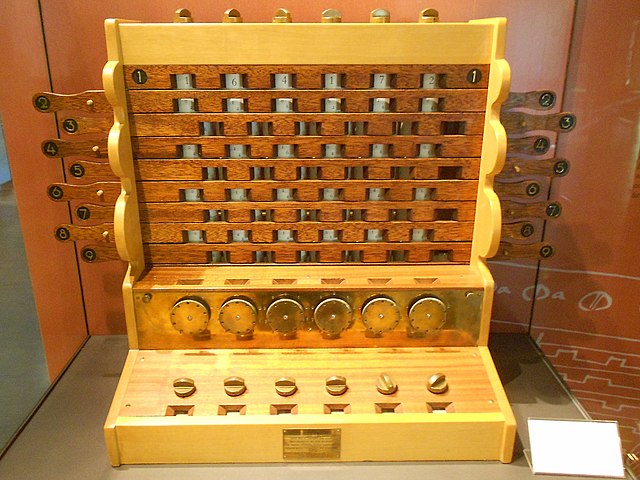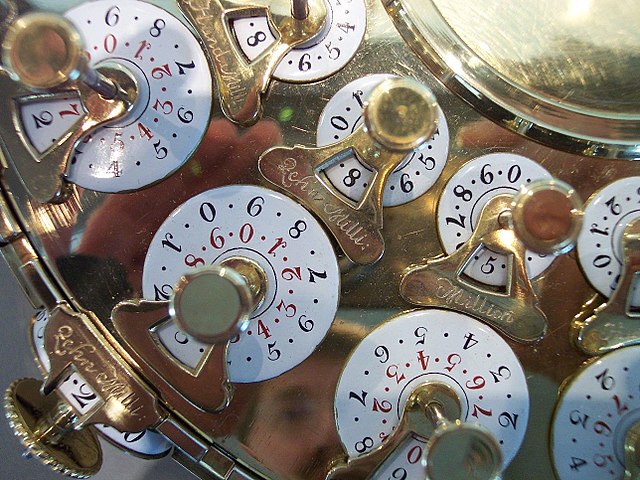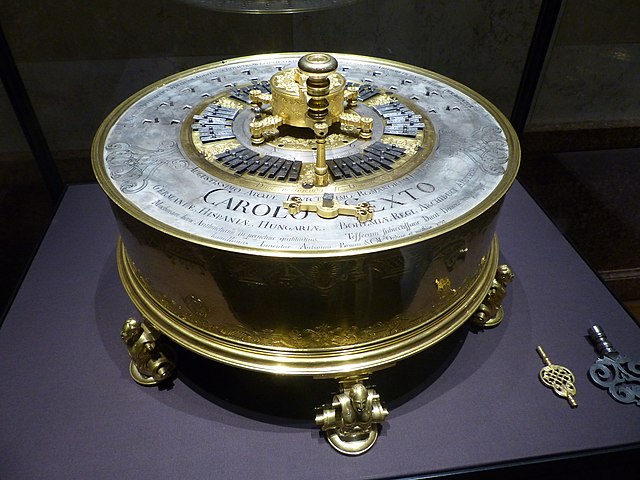Pascal's calculator is a mechanical calculator invented by Blaise Pascal in 1642. Pascal was led to develop a calculator by the laborious arithmetical calculations required by his father's work as the supervisor of taxes in Rouen. He designed the machine to add and subtract two numbers directly and to perform multiplication and division through repeated addition or subtraction.
A Pascaline signed by Pascal in 1652
Top view and overview of the entire mechanism
Detail of the carry mechanism and of the sautoir
Input wheel
A mechanical calculator, or calculating machine, is a mechanical device used to perform the basic operations of arithmetic automatically, or (historically) a simulation such as an analog computer or a slide rule. Most mechanical calculators were comparable in size to small desktop computers and have been rendered obsolete by the advent of the electronic calculator and the digital computer.
Four of Pascal's calculators and one machine built by Lépine in 1725, Musée des Arts et Métiers
Replica of Schickard´s calculator
Detail of a replica of an 18th-century calculating machine, designed and built by German Johann-Helfrich Müller.
A mechanical calculator from Anton Braun, dated 1727








